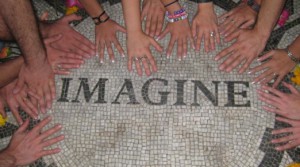Conflict Transformation
Conflict resolution practitioners routinely stress the importance of listening. Mediators, arbitrators, and negotiators must listen carefully to the different sides of a conflict in order to either hammer out a compromise (arbitration) or to guide the participants to their own solution to the dispute (mediation).
This conflict transformation approach doesn’t simply paper over differences of opinion in order to get an agreement at all costs. Those who practice conflict transformation work to alter the structures and conditions that give rise to conflict in the first place. The conflict resolution model, made famous by the Harvard Negotiating Project and the book Getting to Yes by Roger Fisher and William Ury, fits well into the negotiating ethos of U.S. business culture. Alternative dispute settlement, in which the plaintiff and defendant work through their problems with a mediator outside the court, reduces the caseload of the legal system without fundamentally challenging its adversarial structure. The conflict transformation model, in contrast, engages in “constructive change efforts that include, and go beyond, the resolution of specific problems,” according to one of its key theorists and practitioners, John Paul Lederach. “It is scientifically sound language because it is based on two verifiable realities: conflict is normal in human relationships, and conflict is a motor of change.”
To what extent do both conflict resolution and conflict transformation reflect the biases of their American innovators? Are conflict resolution professionals who practice across borders, to use Richard Rubenstein’s phrase, “modern missionaries”? How do other cultures creatively transform conflicts? To what extent are violent conflicts in the Global South a legacy of the colonial system and how does that factor into the transformation of such conflicts? Can the transformation of conflict at a political or economic level succeed without an accompanying change at the cultural level? How is it possible to reconcile the conflict-generating dynamics of movements for justice with the conflict-reconciling dynamics of movements for peace?
Suggested research at Provisions:
John Paul Lederach’s concise guide to conflict transformation
this on-line journal of peace and conflict resolution
the University of Colorado website
broadcasts from Studio Ijambo
the movie The Milagro Beanfield War.


